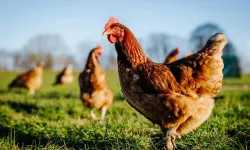About 75,000 years ago, a middle-aged Neanderthal woman was killed in a rock fall. Thanks to a special team of archaeologists, the face of the Neanderthal woman has been reassembled.
The skeleton, named "Shanidar Z", had been buried under tens of thousands of years of sediment before it was first unearthed in 2018.
When experts from Cambridge University and Liverpool John Moores first discovered the skull, it was flattened to about 2 centimeters thick.
MORE THAN 200 FRAGMENTS WERE PIECED TOGETHER
The young woman's face had been crushed by a rock fall, which meant more than 200 pieces had to be pieced together to restore it to its original shape.
Now her face has been reassembled as part of a new Netflix documentary called "Secrets of the Neanderthals".
According to current estimates, the skulls of Neanderthals and humans look very different. Neanderthal skulls have large brow ridges and no chin; a protruding face leads to more prominent noses.
But the reconstructed face shows that these differences are not so sharp in real life.
To reconstruct the skeleton, the team used a glue-like joiner to strengthen the bones.
LIFE AND DEATH DISTINCTION IN NEANDERTHALS
They then pulled the woman, Shanidar Z, out from under seven and a half meters of soil and rock in the heart of the cave north of Baghdad, in blocks wrapped in dozens of small foils.
Further investigations since Shanidar Z's discovery have detected microscopic traces of charred food in the nearby soil.
These charred fragments of wild seeds, nuts and grasses show that Neanderthals not only prepared food and then cooked it, but also did so in front of their dead.
"Shanidar Z's corpse was within arm's reach of living individuals cooking and eating with fire," experts said of this latest discovery. For Neanderthals, there seems to have been no clear distinction between life and death.















